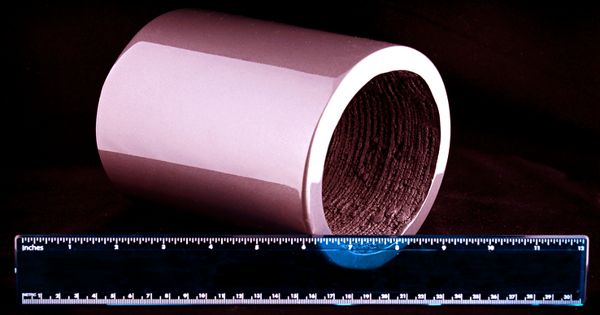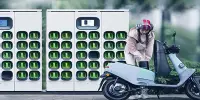Scientists discover Freshly Printed Magnets
During metal processing in the 3D laser printer, temperatures of more than 2,500 degrees Celsius are reached within milliseconds, causing some components of the alloys to evaporate. It looks quite inconspicuous to the casual beholder, hardly like groundbreaking innovation: a small metallic chessboard, four millimeters long on either side. At first glance, it shines like polished steel; at second glance, minute differences in color are visible: The tiny chessboard has 16 squares, eight appear slightly darker, the other eight a bit lighter.
“Empa researchers spotted an opportunity – and are now using the effect to create new alloys with novel properties and embed them in 3D-printed metallic workpieces with micrometer precision.”
The unassuming material sample goes to show that 3D printing with the help of laser beams and metal powder is not only suitable for creating new geometric shapes, but also for producing new materials with completely new functionalities. While widely considered a problem inherent to the process, Empa researchers spotted an opportunity – and are now using the effect to create new alloys with novel properties and embed them in 3D-printed metallic workpieces with micrometer precision. The small chessboard is a particularly obvious example: Eight squares are magnetic, eight non-magnetic – the entire piece has been 3D-printed from a single grade of metal powder. Only the power and duration of the laser beam varied.
As a starting point, an Empa team led by Aryan Arabi-Hashemi and Christian Leinenbach used a special type of stainless steel, which was developed some 20 years ago by the company Hempel Special Metals in Dübendorf, among others. The so-called P2000 steel does not contain nickel, but around one percent of nitrogen. P2000-steel does not cause allergies and is well suited for medical applications. It is particularly hard, which makes conventional milling more difficult. Unfortunately, at first glance it also seems unsuitable as a base material for 3D laser printing: In the melting zone of the laser beam, the temperature quickly peaks. This is why a large part of the nitrogen within the metal normally evaporates, and the P2000 steel changes its properties.
“It is very challenging to use laser printing to identify potential permanent magnet phases for bulk materials because of the need to develop the necessary microstructure,” says CMI scientist Ikenna Nlebedim. “But this research shows that additive manufacturing can be used to rapidly and economically identifying promising permanent magnet alloys.”
Turning a problem into an advantage
Arabi-Hashemi and Leinenbach managed to turn this drawback into an advantage. They modified the scanning speed of the laser and the intensity of the laser beam, which melts the particles in the metal powder bed, and thus varied the size and lifetime of the liquid melt pool in a specified manner. In the smallest case, the pool was 200 microns in diameter and 50 microns deep, in the largest case 350 microns wide and 200 microns deep. The larger melt pool allows much more nitrogen to evaporate from the alloy; the solidifying steel crystallizes with a high proportion of magnetizable ferrite. In the case of the smallest melt pool, the melted steel solidifies much faster. The nitrogen remains in the alloy; the steel crystallizes mainly in the form of non-magnetic austenite
Shape Memory Alloys become smart
The experiment, which seems like a mere gimmick, could soon add a crucial tool to the methodology of metal production and processing. “In 3D laser printing, we can easily reach temperatures of more than 2500 degrees Celsius locally,” says Leinenbach. “This allows us to vaporize various components of an alloy in a targeted manner – e.g. manganese, aluminum, zinc, carbon, and many more – and thus locally change the chemical composition of the alloy.” The method is not limited to stainless steel, but can also be useful for many other alloys.
Fine structures for the electric motor of the future
The ability to produce different alloy compositions with micrometer precision in a single component could also be helpful in the design of more efficient electric motors. For the first time, it is now possible to build the stator and the rotor of the electric motor from magnetically finely structured materials and thus make better use of the geometry of the magnetic fields.















